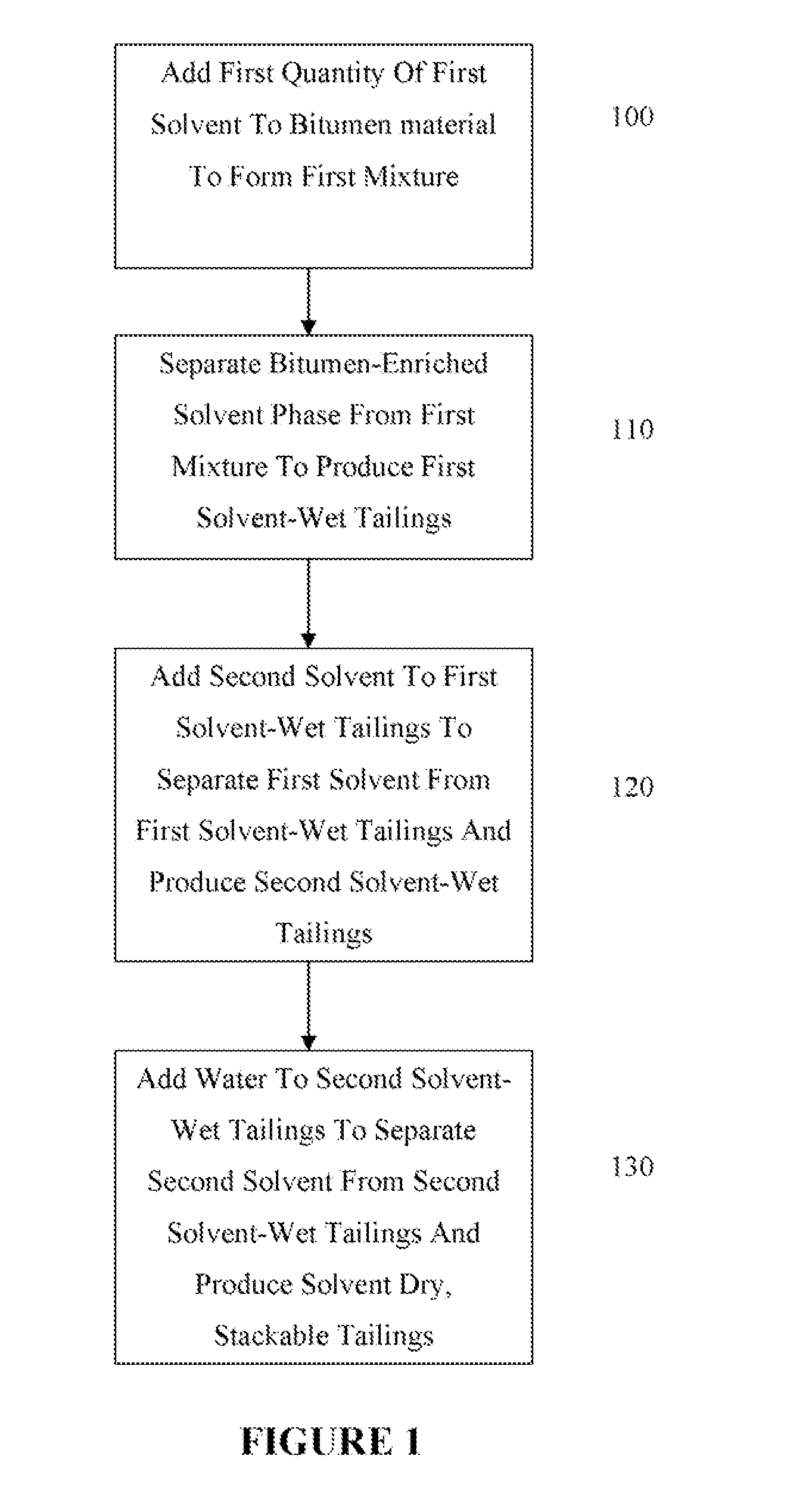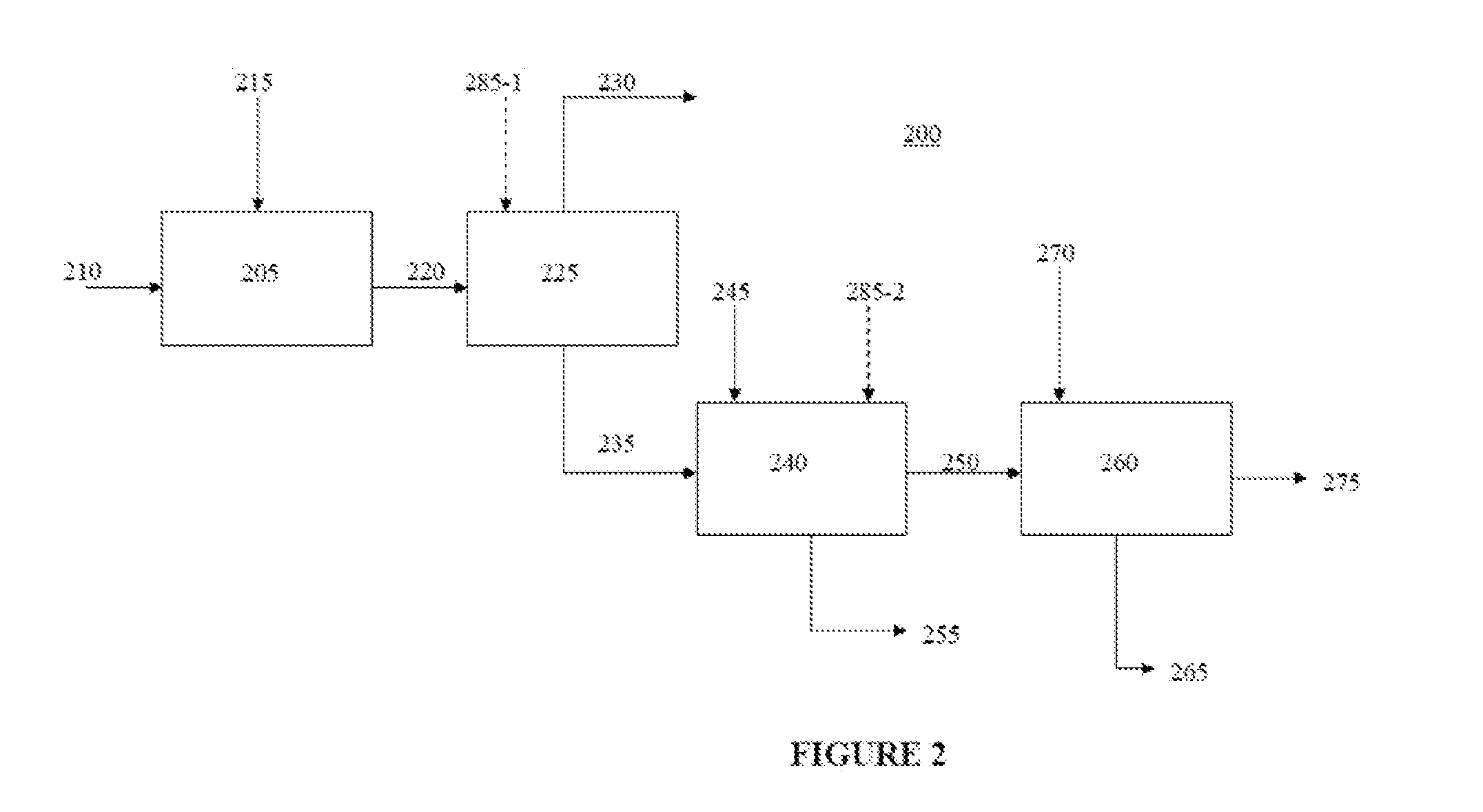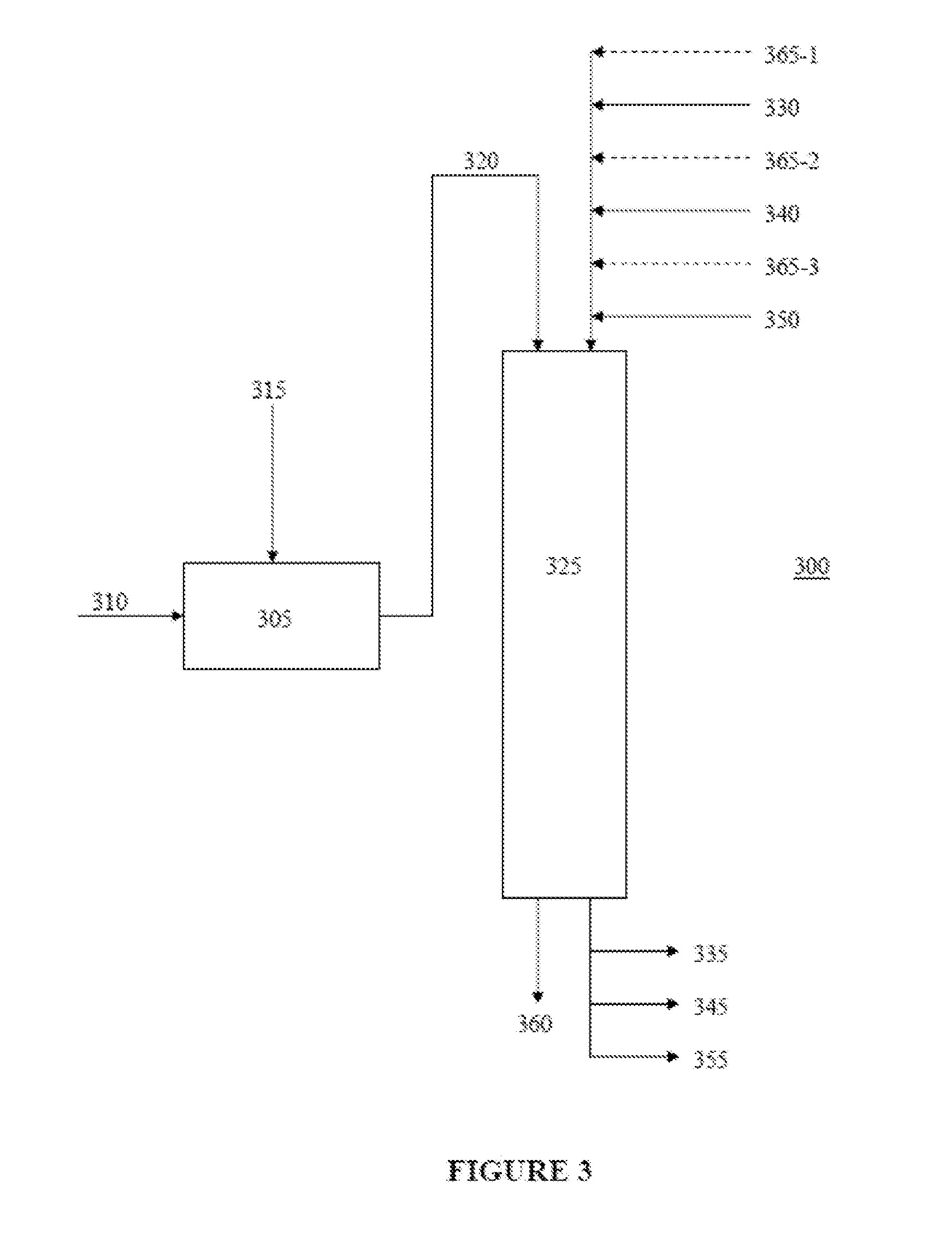Methods for extracting bitumen from bituminous material
a bitumen and bitumen technology, applied in the field of methods for extracting bitumen from bituminous materials, can solve the problems of reducing the yield of hydrocarbon materials, reducing profit, and complicating the disposal of tailings, so as to achieve effective removal of paraffinic solvent, easy disposal, and the effect of effectively removing paraffinic solven
- Summary
- Abstract
- Description
- Claims
- Application Information
AI Technical Summary
Benefits of technology
Problems solved by technology
Method used
Image
Examples
example 1
Semi-Continuous Countercurrent Washing Using a Horizontal Filter Press
[0156]A first bitumen extraction experiment was conducted using a filter press 21.1 kg of oil sand ore having a bitumen content of 13.5 wt % was mixed with 5.9 kg of disbit solvent containing 1.4 kg of bitumen and 4.5 kg of Aromatic 150. The disbit solvent to bitumen ratio was about 1:2.1. The disbit solvent and oil sand ore were mixed for 10 minutes in a disaggregation device.
[0157]The ore / solvent mixture was removed from the disaggregation device and pumped to the filter press. The filter press was filled through a fill orifice until pressure reached a maximum. The filter press was pressurized with an inert gas and the bitumen-enriched solvent phase collected at the outlet of the filter press. The bitumen-enriched solvent phase weighed 5.4 kg, including 2.6 kg of bitumen and 2.8 kg of disbit solvent. Disbit-wet tailings remained in the filter press. The bitumen recovery for this initial step amounted to 62%.
[015...
example 2
Semi-Continuous Countercurrent Washing Using a Horizontal Filter Press
[0162]A second bitumen extraction experiment was conducted in the same manner as described above in Example 1, with the exception that a PneumaPress®-type horizontal pressure filter was used to carry out the experiment. The results of the second bitumen extraction experiment are summarized below in Table 2.
TABLE 2Mass Balance for Solvent Extraction of Bitumen in a Filter Press Apparatus (all valuesin kg)MassBitumenS150MeOHSolidsWaterHydrocarbonPP25InOutInOutInOutInOutInOutInOutInOutSlurry FillFeed to Press25.403.71164.1317.060.507.84Primary Disbit4.381.97772.404.38Secondary Leach(Feed to 2nd stage leach)21.031.731.73Second Solvent Addition4.204.204.20Secondary Disbit5.100.764.345.10MeOH Wash(Feed to Wash stage)20.130.981.59Wash Solvent Addition5.705.70Final Wash Product6.490.110.635.750.74Water Wash(Feed to water wash)19.34Water Addition7.157.15Wash Product6.85NANANA6.85Tailings(Feed to Tailings)19.650.870.96Taili...
example 3
Semi-Continuous Countercurrent Washing Using a Vertical Column in Down Flow Mode
[0163]Two trials of a third bitumen extraction experiment were carried out in a 3 inch diameter by 3 feet vertical column fitted with flanges on the top and bottom of the column. The bottom flange had a ½″ solvent outlet port and was covered with a 120 mesh metal screen. The top flange had a solvent inlet port, pressure relief valve, and nitrogen inlet to control the pressure applied to the headspace in the column.
[0164]In each trial, Athabasca oil sand ore containing about 14% bitumen was dry screened to provide pieces of ore having a size of ¼″ or less. The ore was forced through the screen leaving only residual clay balls and rocks behind. The screened ore was disaggregated with recycled secondary disbit (Aromatic 150 and bitumen) in a Lightning Lab Master Mixer using the A320 down pumping blade.
[0165]The slurry produced from the disaggregation step was loaded into the column by hand. After the slurry...
PUM
| Property | Measurement | Unit |
|---|---|---|
| boiling point temperature | aaaaa | aaaaa |
| boiling point temperature | aaaaa | aaaaa |
| boiling point temperature | aaaaa | aaaaa |
Abstract
Description
Claims
Application Information
 Login to View More
Login to View More - R&D
- Intellectual Property
- Life Sciences
- Materials
- Tech Scout
- Unparalleled Data Quality
- Higher Quality Content
- 60% Fewer Hallucinations
Browse by: Latest US Patents, China's latest patents, Technical Efficacy Thesaurus, Application Domain, Technology Topic, Popular Technical Reports.
© 2025 PatSnap. All rights reserved.Legal|Privacy policy|Modern Slavery Act Transparency Statement|Sitemap|About US| Contact US: help@patsnap.com



